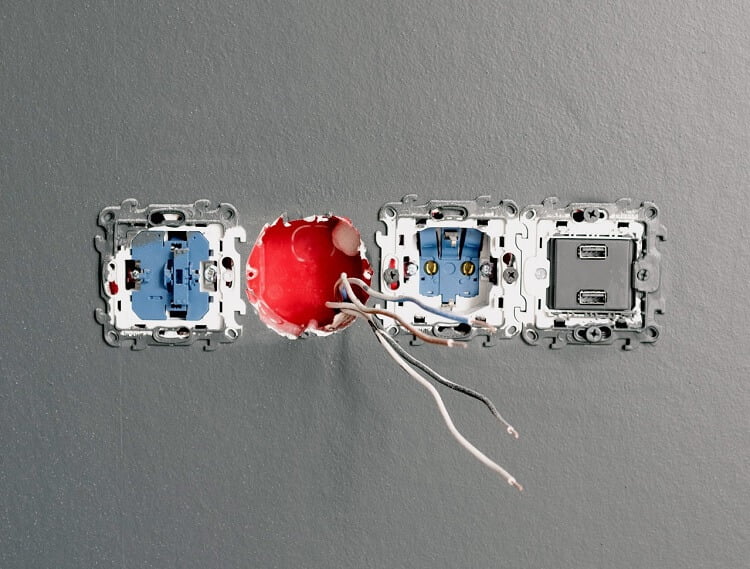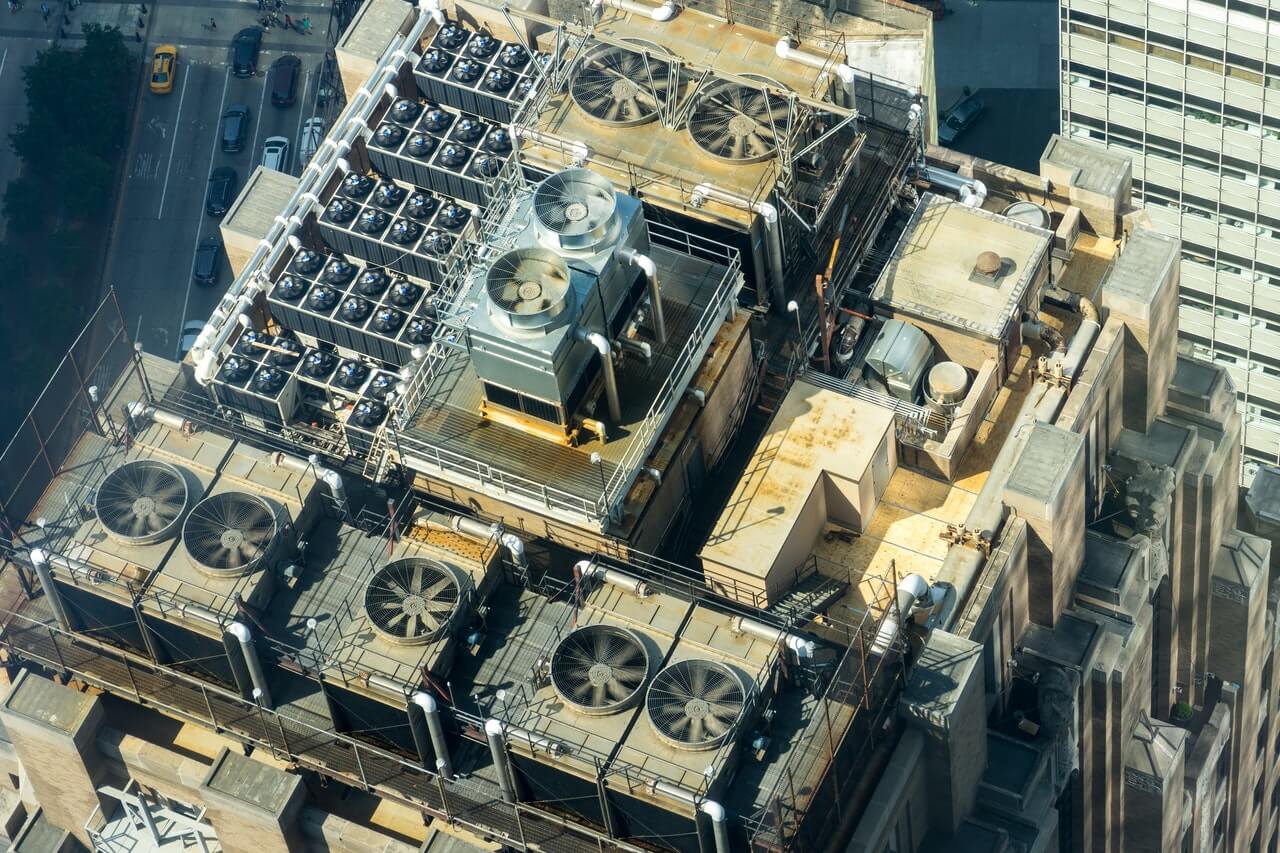HVAC systems are commonly seen in many households. They keep your room at a steady and favorable temperature allowing you to relax and unwind. Many HVAC systems are coupled with thermostats that regulate temperature.
However, some users of a thermostat-coupled HVAC system have often reported that the presence of a thermostat has had negative effects on their HVAC system. This includes throwing temperature settings off and inefficient heating or cooling.
So a common question being thrown around is whether a thermostat can damage the HVAC system. And if yes, how can a thermostat damage your HVAC system. We’ll answer your questions in this article.
Role of a Thermostat in an HVAC System
In case you did not know how a thermostat works alongside your HVAC system, it would help to review it. A thermostat works as a temperature sensor, working to sense the temperature of its surroundings.
A thermostat is an important component of temperature control as you can input a specific temperature in it. The device will then sense the surrounding temperature, and if the surrounding temperature is lower or higher than the set temperature, it will take action to bring it back to the desired value.
As you can see, a thermostat works as a control base or a brain for the HVAC system instructing on when to cool or heat the room as required. As such, inefficient heating can result when your thermostat isn’t working properly.

Thermostat Malfunction
When your HVAC system isn’t working properly (not cooling or heating fast enough or to the right temperature), you’ll often find that the main issue lies in a faulty thermostat. Most repairman and technicians will check to see if you’re thermostat is working properly or not.
Now that you know what role a thermostat plays in your HVAC system, it is time to see how your thermostat can malfunction and how it damages your HVAC system. Alongside that, we’ll also see what we can do to either prevent it or fix it. Some of the ways thermostats can malfunction are:
1. C-Wire Misconnections
Almost all thermostats require a C-wire to work. A C-wire is known as the common wire, which provides continuous power to the thermostat. This allows a thermostat to work continuously without having to have its batteries changed regularly.
Often the installation of a thermostat involves buying and installing a C-wire (if your house doesn’t have one installed already) as it is a good investment. If the installation goes wrong or if the C-wire is not properly set up, then your thermostat might not have a proper supply of power.
This improper supply or fluctuations in power can have several effects. For one, it should be noted that many thermostats control the HVAC system via WiFi signals.
These consume a lot of power to be emitted continuously, and so improper C-wire installation will cause your thermostat to die out faster and not work most of the time.

Prevention or Solution
This particular issue can be completely avoided, provided you install the thermostat properly. It is recommended to enlist the help of an expert technician who is properly experienced with C-wire installation.
If your house already comes with a C-wire, you can probably try to connect the thermostat on your own provided you follow the instructions properly, but it is recommended to have a technician look at it for you.
Check out this guide: How C-Wire Works & Proper Setup
2. Miscalibration of the Thermostat
This is the most common issue many users of thermostats will face, and can this issue can have a large effect on how well your HVAC system works. Miscalibration refers to a disparity in the readings and operation of your thermostat.
A miscalibrated thermostat will record the temperatures inaccurately. This can lead to a plethora of problems depending on the disparity of the readings. Your HVAC system might get turned on and off during odd times and also stay on for much longer than it is required.
All these, if left unchecked, can drastically reduce the performance and longevity of your HVAC system alongside being inefficient.
Prevention or Solution
This particular problem can be hard to spot and pinpoint. There can be a lot of reasons why it happens as even some thermostats lose their calibration settings with time. Often the changes are minimal enough that you don’t feel it occurring until after some time.
Repairing a thermostat is a good option, but overall, it is better to invest in a new one (a later model as those often have more accurate and sensitive temperature sensors).
If you see that your HVAC system turns on and off at odd times or if the temperature settings are off, it is recommended to quickly check the thermostat settings.
3. Short Cycling
If your thermostat malfunctions, it might cause your HVAC system to short cycle. This causes the HVAC system to turn on and off rapidly. Usually, HVAC systems take some time to get to their optimum working conditions after being turned on, which is why you’re recommended to let them stay on for some time.
However, if your thermostat causes a short cycle, it will put a massive strain on the compressor. The compressor is an integral part of the HVAC system and also the most expensive.
Careless use can cause the compressor to degrade, which will significantly lower the performance of your HVAC system. All this occurs because the thermostat incorrectly determines the working temperature and can be a direct consequence of miscalibration, among other reasons.
Prevention or Solution
If you see your HVAC system randomly turning on and off on a moment’s notice, quickly turn the thermostat off before the compressor is heavily strained. At this point, you can either choose to repair your thermostat or upgrade to a new one.
It is generally recommended to upgrade to a new one. And it is also recommended to have a technician check your wiring in case there was a fault in the circuitry that caused this.
Impact of Thermostat
A thermostat is an important component of your HVAC system and can help to regulate temperature efficiently. However, as you can see, it can also damage the HVAC system and can often time even go unnoticed.
While later models of thermostats are made to be more sensitive and better calibrated, it still doesn’t make them immune to malfunction. More often than not, you’ll see that an HVAC system isn’t working to its full capacity because of an issue with the thermostat.
An HVAC system can considerably improve with a properly working thermostat, but you can also suffer repair issues and expenses if you’re not careful. Thermostats aren’t necessarily bad for your HVAC and furnaces, but they do require some maintenance.
Conclusion
Are thermostats worth the trouble? Yes. A good, properly calibrated thermostat can improve your household and make it relaxing during both the summer and winter seasons.
They are also efficient and aren’t too expensive to replace or even repair. Despite what people say, a thermostat doesn’t damage your HVAC system if you are careful enough with it.
